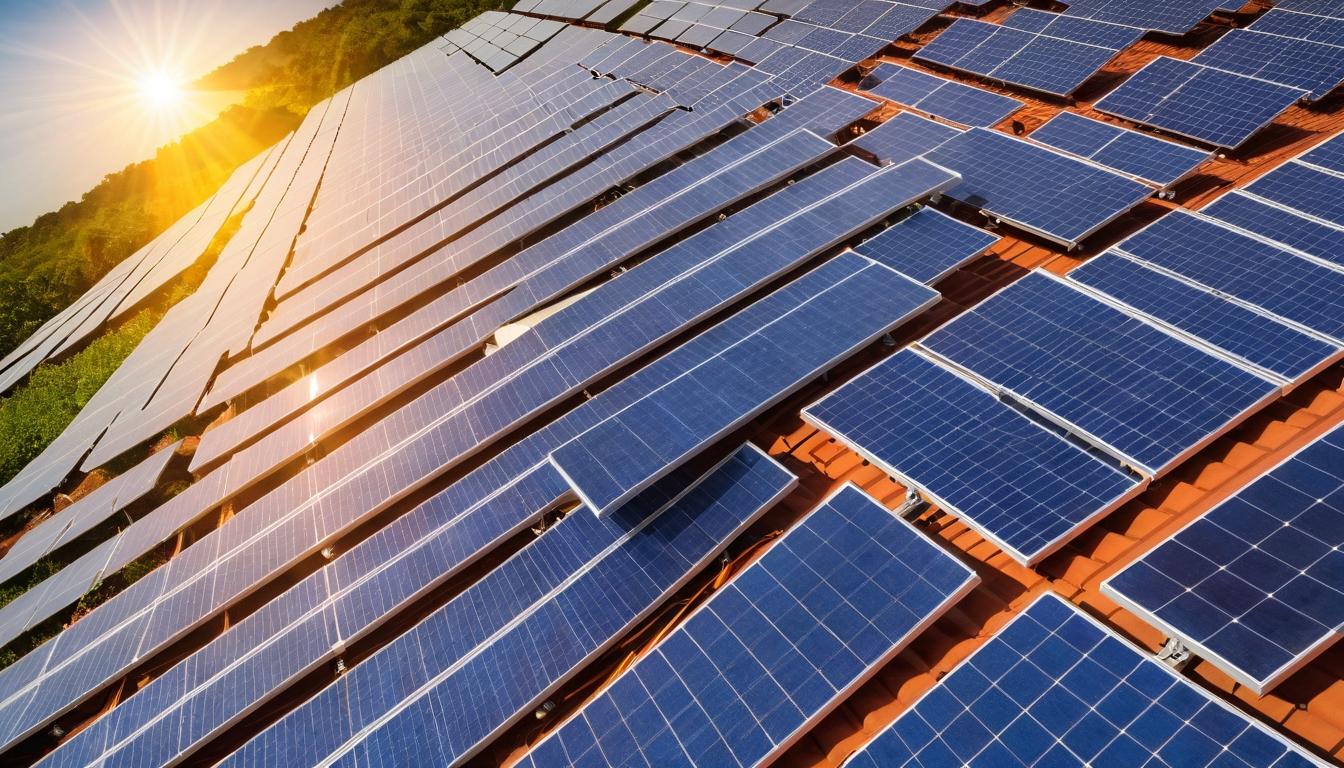Walking through the sprawling solar farm outside Phoenix, the silence is almost unnerving. Thousands of panels stretch toward the horizon, their dark surfaces drinking in the desert sun with quiet efficiency. But beneath this placid surface, the solar industry is experiencing the kind of growing pains that would make any teenager cringe. Supply chain snarls, regulatory whiplash, and technological disruption are creating the most turbulent period in solar's history - and the outcome will determine whether clean energy becomes the dominant force or just another promising technology that couldn't scale.
Manufacturing has become the industry's Achilles' heel. While demand for solar panels has skyrocketed, domestic production has struggled to keep pace. The result? A dangerous dependency on overseas suppliers that leaves American solar projects vulnerable to geopolitical tensions and shipping disruptions. Companies that secured their panel supplies early are racing ahead with projects, while others face months-long delays and budget overruns that threaten their very existence.
Meanwhile, the technology itself is evolving at breakneck speed. Bifacial panels that capture light from both sides are becoming standard on large-scale projects, while perovskite solar cells promise revolutionary efficiency gains - if researchers can solve their durability issues. The race isn't just about who can produce the cheapest panels anymore; it's about who can innovate fastest while maintaining reliability.
Storage has emerged as the industry's new frontier. Solar installations without battery backup are increasingly seen as incomplete solutions, like having a car with no gas tank. The falling costs of lithium-ion batteries have made solar-plus-storage projects economically viable, but new battery technologies - from flow batteries to solid-state designs - promise even greater breakthroughs. The holy grail? Making solar power available 24/7, regardless of weather conditions.
Residential solar faces its own unique challenges. The rooftop revolution has hit regulatory speed bumps as utilities push back against net metering policies that they claim shift grid maintenance costs to non-solar customers. Homeowners are caught in the middle, trying to navigate complex incentive programs that vary not just by state, but often by utility district. The result is a patchwork of regulations that can make going solar feel like navigating a legal minefield.
Workforce development has become another critical bottleneck. The solar industry needs to train hundreds of thousands of new workers in the coming years, from installers and electricians to engineers and project managers. Community colleges and trade schools are scrambling to develop curriculum, but the shortage of qualified trainers threatens to slow the industry's expansion just when it needs to accelerate.
Financing models are undergoing their own transformation. The traditional solar lease is giving way to more sophisticated arrangements, including community solar programs that allow renters and homeowners with shaded roofs to participate in the solar economy. Investment funds dedicated to renewable energy are pouring billions into projects, but they're demanding higher returns and better risk management than ever before.
The international landscape adds another layer of complexity. Trade disputes over solar panel components have created uncertainty for developers, while different countries are pursuing wildly different strategies for supporting solar growth. Some are betting big on massive utility-scale projects, while others are focusing on distributed generation through rooftop systems. The lack of coordination means the global solar market remains fragmented and inefficient.
Environmental concerns are also coming to the forefront. As early solar installations reach the end of their 25-30 year lifespans, the industry faces its first major wave of decommissioning and recycling. Developing efficient recycling processes for solar panels has become urgent, with researchers working on methods to recover valuable materials like silver and silicon while minimizing waste.
Despite these challenges, the fundamental economics continue to favor solar. The levelized cost of solar electricity has fallen more than 85% in the past decade, making it competitive with fossil fuels in most markets. This price advantage, combined with growing corporate demand for clean energy and increasing public concern about climate change, creates powerful tailwinds that should carry the industry through its current difficulties.
The next few years will be decisive. Will solar overcome its growing pains to become the backbone of a clean energy system, or will it remain a complementary source hampered by implementation challenges? The answer depends on how quickly the industry can address its supply chain vulnerabilities, regulatory uncertainties, and workforce shortages. One thing is certain: the quiet revolution happening in solar farms and on rooftops across America will shape our energy future for generations to come.
The solar revolution hits its awkward teenage years - and the growing pains are real




